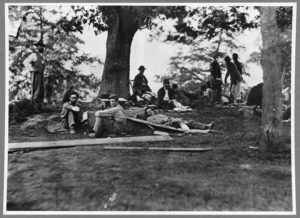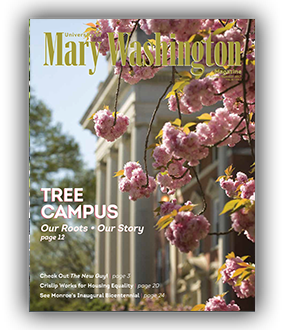
Wounded soldiers convalesce under shelter of the Brompton Oak in May 1864. This famous photo is in the collection of the Library of Congress.
What do we mean when we call the Brompton Oak a “witness tree”?
Though nobody knows the tree’s exact age, it was already mature by the time of the Civil War. Brompton was under Confederate control during the bloody fighting in Fredericksburg in December 1862 and May 1863. Though bullets riddled the brick home, the tree remained relatively unscathed through those battles. It stood as a witness over a stretch of ground where thousands of soldiers fought, suffered, and died.
Under Union control after the 1864 Battle of the Wilderness, Brompton became a hospital. Northern doctor William Howell Reed described it as hellish: fetid, swarming with vermin, and crammed with men in the agonies of death.
But for some of the wounded, the oak’s broad branches provided a respite.
“Monday, the 23d of May, 1864, was a most lovely day,” Reed wrote in his 1866 book Hospital Life in the Army of the Potomac.
“The breeze came fresh and cool from the north; the air was pure and clear; the sky perfectly cloudless. … It was a day for the convalescents, and it seemed as if those who were near to death must be revived by the delicious softness of the bracing air. We moved them out of the stifling rooms to the lawn … a grand old oak … gave shelter to nearly fifty men.”
Today, the Brompton Oak witnesses more peaceful scenes, shading the home of the University of Mary Washington president.
— Laura Moyer
